Reproduction of a stunning race car!
This article was originally published in RC Driver’s November 2015 issue.
Photos by Edwin Rodriguez
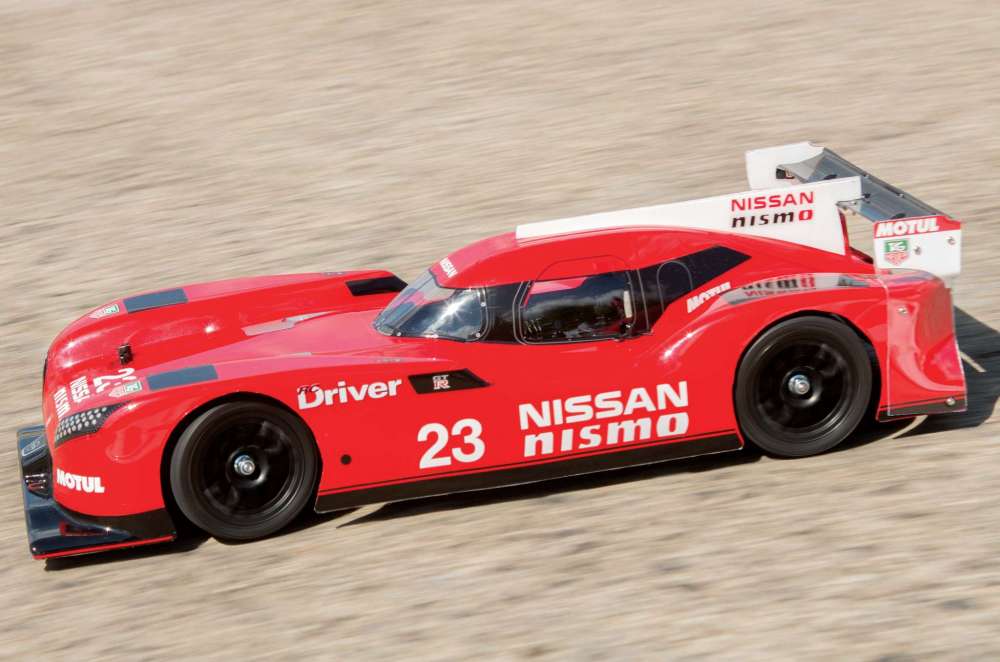
LeMans prototypes are the fastest closed-wheel circuit race cars on the planet. At some point, a lot of the major manufacturers have competed in the class simply because of the prestige the class brings. There’s also the fact that those companies get to build specialized cars with an almost unlimited nature! Nissan is one of the participating companies, with their latest LM entry being the 1250hp GT-R LM Nismo. As they do best, Tamiya has quickly jumped on the reproduction of this car, giving us the stunning reproduction you see here. I’m pretty sure I’ll never get to drive the full-scale version of this car, but I’m more than excited to give the 1/10-scale version a whirl!
AT A GLANCE
WHO MAKES IT: Tamiya
WHO IT’S FOR: Anyone, especially Le Mans lovers
PART NUMBER: 58617
HOW MUCH: $164.97
BUILD TYPE: Kit
PROS
• Awesome looking Nissan GT-R Le Mans body
• Easy build, took about two hours
• Simple but effective front and rear suspensions
• Accepts NiMh or LiPo batteries
• Plenty of room for electronics
• Motor included
• Lots of aftermarket parts to groovy it up
CONS
• Have to mutilate the servo to mount it
• No foam bumper/front body support
REVIEWER’S OPINION
Tamiya has put out a few of these Le Mans cars, but definitely hit the nail on the head with the Nissan GT-R LM Nismo. The body is stunning both on and off the track. The F103GT chassis works well and can easily tame the included Mabuchi motor, making this a fun car to drive. I would love to see a scale 24-Hour Le Mans race with a bunch of these cars! I’d be there in a heartbeat!
TOOLS AND ACCESSORIES INCLUDED
• Double-sided tape
ITEMS NEEDED
• Servo, Electronic Speed Control,
• Transmitter, Battery, Paint
ITEMS USED
• Hitec HS-322HD Servo, LRP Ai Runner
• Reverse ESC, Tactic TTX240 Radio System,
• Duratrax 3000mAh NiMh Battery, Tamiya PS
• Spray Paint
HOP-UPS WE RECOMMEND
There are a few items I’d suggest getting if you’re going to get really serious with this car:
•53902 F103GT Aluminum Motor Mount This aluminum piece is a direct bolt on and helps keep any motor cooler by pulling the heat away from it. It even has cooling fins machined into it. A definite must-have piece if you plan on racing.
•53901 TRF Special Damper The stock center damper setup works pretty well, but if you want to gain maximum control over the rear suspension, an oil-filled shockis a no-brainer. If you’re going to upgrade, get one of these shocks; Tamiya’s dampers are among the best in the business.
• 51000 Hi-Torque Servo Saver This is a major upgrade part for the steering. It uses three steel rings to control the flex of the servo saver, allowing more precise steering without all the wandering the stock unit sometimes exhibits.
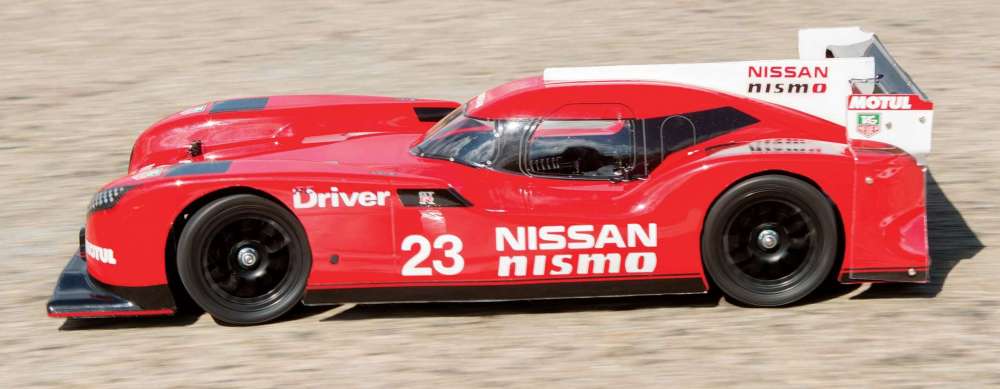
FEATURE BREAKDOWN
The chassis used is your standard F103GT setup; a 2.5mm black fiberglass front deck that is mated to a 1.5mm black fiberglass T-plate. The servo mounts upright just behind the front suspension; however, you do need to hack off both sets of mounting tabs prior to installation. This allows a solid mount, just make sure you’re OK with this servo being in this car, well, forever. Once you hack the mounting tabs off you may not be able to use it in any other type of car. Just behind the servo sits the LRP Ai Runner ESC and Tactic receiver. Both of these have a tiny footprint so they easily mount side-by-side in the space provided. The battery box is next in line, mounting horizontally across the chassis. It can accept either a 6-cell NiMh pack or a 2S, square-case LiPo pack. A pair of doors on each side keep the battery safely contained inside the battery box. The 1.5mm top deck attaches to the servo mounting plates and extends rearward, connecting to the battery box. The deck has quite a few holes milled into it to lighten in up as well as to allow a little bit of flex to aid in rear traction.
You may notice that the F103GT doesn’t appear to have a lot of suspension built into it, and you’d be right. Because they’re designed for smooth surfaces, minimal suspension is really all that’s needed. There is quite a bit of adjustability, though. Up front, the F103GT utilizes a kingpin-coilover suspension; swapping out the springs can change the way the GT handles. Adjusting the ride height can be accomplished by simply relocating the shims on the kingpin. The caster is also adjustable by moving the upper arm forward or backward with shims. Toe and bumpsteer can also be tuned very easily. Moving to the rear, we find quite a bit of adjustment as well. Tweaking the stiffness of the T-bar screw (under the chassis) controls the roll of the GT. Ride height can be changed using the inserts the axle runs through. Even damping can be adjusted by changing the grease in the shock and on the damper disk.
The steering on the F103GT is about as simple as it gets. The servo mounts upright between a pair of plastic plates and has an integrated servo saver built into the servo horn. Extending out to the steering knuckles are a pair of rods with a Z-bend on one end and a ball cup on the other. There are two mounting locations on the knuckles and the GT comes with a trailing axle setup. An inline axle option is available for those of you that like a TON of steering. As I mentioned before, make a wise decision when choosing your steering servo as it requires some modification to install.
The drivetrain on this car is also quite simple. The included Mabuchi 540 brushed motor mounts snugly in the plastic motor pod right in front of the rear axle. Bearing inserts (yes, a full bearing set is included) slip into the rear pod and can be switched out to adjust ride height. A ball differential with external adjustment is included. In older Tamiya kits, adjusting the diff was a bit of a pain; removing the tire to adjust also meant losing your current diff setting. Now, you simply remove the right rear tire/wheel, remove the aluminum diff cap and wah-lah – there’s your diff adjustment screw. It really is the simple things that make a big difference
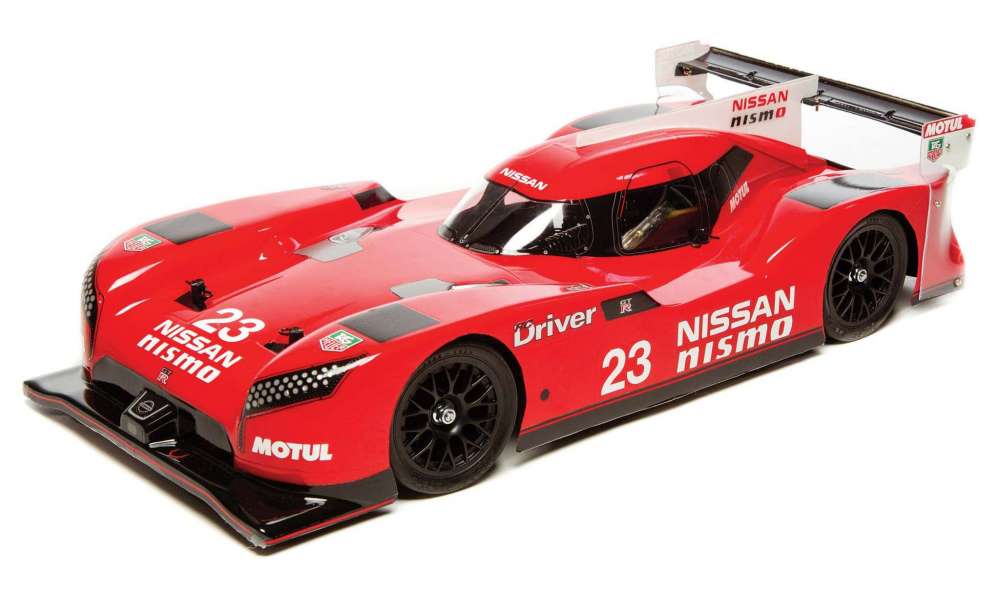
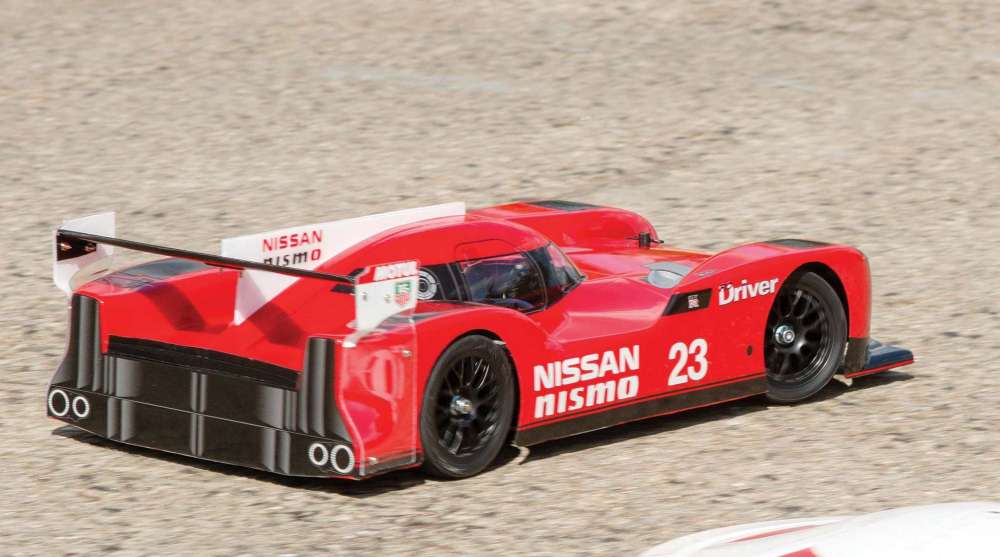
ON THE TRACK
To give the F103GT a proper workout, I decided to do my testing on a carpet track; it’s fast, consistent and, right now, a whole heck of a lot cooler than being outside! I charged up my Duratrax pack, glued up my tires and gave the Nissan a quick once-over to make sure everything
was ready.
Before exploring the full potential of the F103GT, you have to make sure the differential is properly set. This is probably the most important step with this type of car. To do this, first make sure the battery is not plugged in. Next, pick up the car by the rear tires; one in each hand. Now, with your right thumb, try to rotate the spur gear. If you can, you need to tighten up the diff. If you can’t, you may need to loosen it slightly. The optimum setting is that it does turn, but it is very hard to do. If you have small hands or a weak thumb, get a friendly track groupie to help you out.
After setting the GT-R down on the rug, I took a quick couple of laps to test the diff setting and overall handling. After about two slow laps I opened her up and could feel almost immediately that the diff setting was almost spot-on as the car felt quite peppy even with the Mabuchi 540 motor. Rear grip was great, allowing me to drive the car hard into a corner and power out without any feeling of oversteer. Steering was good but did feel a little wandery and sluggish in the fast corners; probably an issue with the stock servo saver being a bit too weak. The one thing this car does best is look good! It’s really quite amazing how many people line the track to see something so beautiful roll around it. Overall, the handling was really good. It was a lot of fun cruising around the track, but be wary that this is not a speed demon. On the Mabuchi, the power is quite low which, of course, will allow the handling of the car to shine. Dropping in a faster motor ups the speed but will also require a bit more tuning to lock it in. The options are there to tune this ride, but my suggestion is if you want to go faster, upgrade to only a slightly hotter motor and get some carpet-designed tires! Then you’ll be in business.
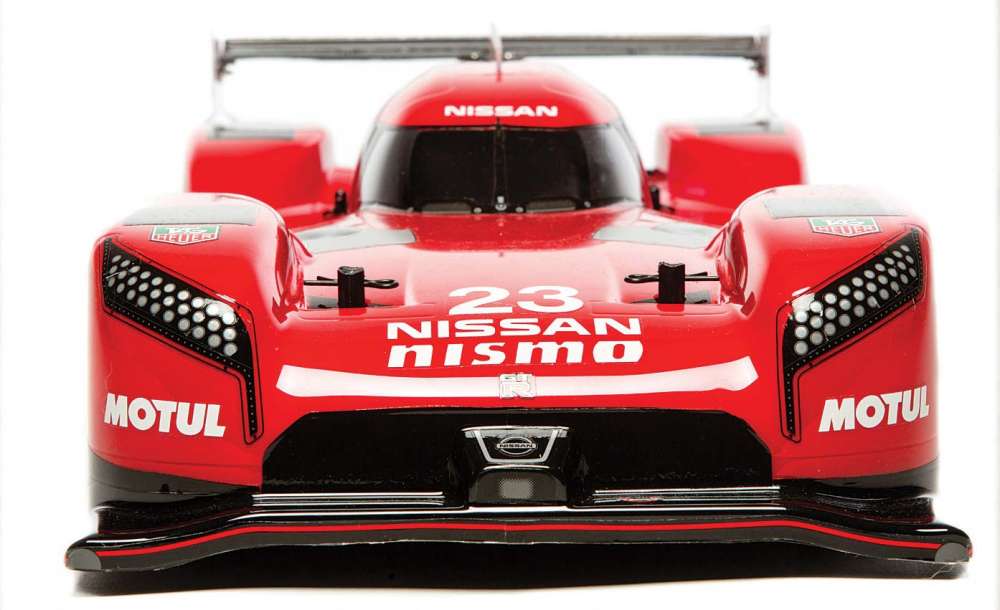
for in-depth reviews on the latest RC vehicles
SPECS AND TUNING OPTIONS
DIMENSIONS
LENGTH: 14.3 in. (365mm)
WIDTH: 7.17 in. (182mm)
WHEELBASE: 10.1 in. (257mm)
BODY, WHEELS AND TIRES
BODY: Clear Lexan Nissan GT-R LM
WHEELS: Plastic multi-spoke
WHEEL ADAPTER TYPE: (F) Bearing supported, (R) 12mm hex
TIRES: Tamiya Super Slicks
SUSPENSION
TYPE: (F) Coil-over kingpin, (R) 1.5mm T-bar with center shock
SHOCK POSITIONS: (F) A/A, (R) 1-T-bar,1-center mount
RIDE HEIGHT: (F) Shims under front bulkhead, (R) Axle inserts
CAMBER: Fixed
WHEELBASE: Fixed
ROLL: Fixed
STEERING
TYPE: Direct
TOE: Threaded rod
CHASSIS
TYPE: Flat
MATERIAL: Fiberglass
THICKNESS: Chassis – 2.5mm, top deck– 1.5mm
DRIVETRAIN
TYPE: 2WD
TRANSMISSION: None
GEAR RATIO: Optional pinion gears
BEARINGS: Full shielded
CLUTCH TYPE: Internal slipper clutch
DIFFERENTIAL: Ball diff
RATING TALLY
Opinion: 7
Performance – Acceleration: 7
Performance – Steering: 8
Performance – Handling: 7
Performance – Durability: 9
Feature Breakdown: 7
Overall Value: 7
WRAP UP
You can get the F103GT in a few different flavors, but the beauty of it is certainly in the stellar Nissan GT-R LM-1 body. The lines are gorgeous and once stickered up, it looks amazing. It only requires three paint colors, perfect for painting noobs (like me) that want to get right to racing. In the handling department, it’s easy to balance grip and steering as long as the track surface is prepped. Tamiya has released a few of the F103GTs with LM bodies like this; I’d really love to see a fun, Spec class like this take off!
LINKS
Duratrax, duratrax.com (217) 398-8970
Hitec, hitecrcd.com (858) 748-6948
LRP, lrp-americastore.com (949) 276-6060
Tactic,tacticrc.com (217) 398-8970
Tamiya, tamiyausa.com (800) TAMIYA-A
 RC Driver The Best In RC Car & Truck News, Reviews & Video
RC Driver The Best In RC Car & Truck News, Reviews & Video 


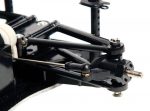
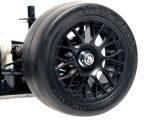


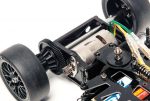






Super rad. I just got mine built up for speed runs with a Castle 7700 brushless setup and Futaba digital steering servo.